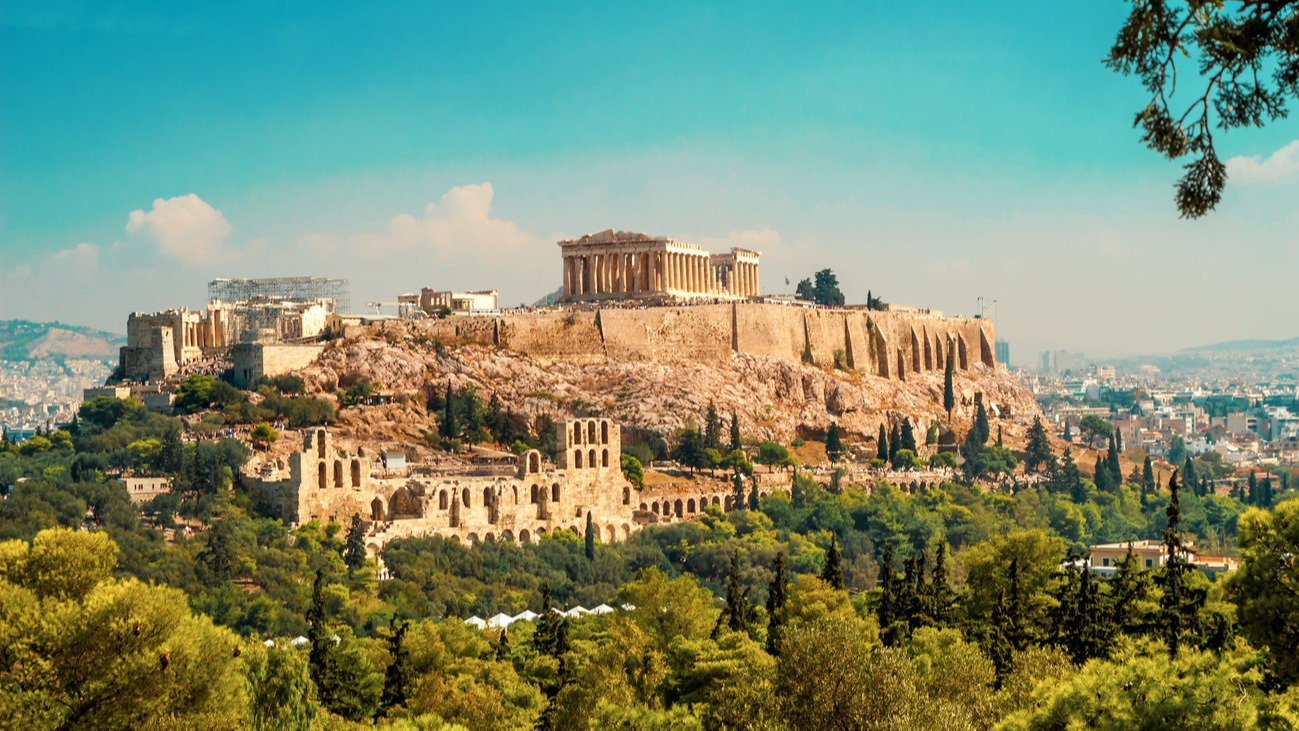Athens has been the capital of Greece since 1834 and the largest and most densely populated city in the country. It was named after the Goddess Athena. It is located in Attica, in eastern Central Greece, and is one of the oldest cities in the world, with its recorded history reaching up to 3,200 BC.
The center of the Greek capital is located in the Municipality of Athens, which is the largest in population in Greece. Piraeus also forms an important center in its own city, within the Urban Complex of Athens, and is the second most populous municipality in it, with Peristeri and Kallithea following.
The Urban Complex of Athens currently consists of 40 municipalities, 35 of which are the municipalities of Greater Athens, integrated into 4 regional units (North Athens, West Athens, Central Athens, South Athens) and 5 more, which are the municipalities of Major Piraeus, belonging to the Regional Unit of Piraeus. The densely populated Urban Complex of the Greek capital is spread over 412 sq.m. throughout the Attica Basin and has a total population of 3,090,508 inhabitants (in 2011).
The Metropolitan Area of Athens covers 2,928,717 sq.m. in the region of Attica and includes a total of 58 municipalities, which are organized in 7 regional units (the above together with Eastern Attica and Western Attica, with a total population of 3,753,783 inhabitants). [38] Athens and Piraeus are the two Metropolitan Centers of the Metropolitan Area of Athens. There are also some Inter-Municipal Centers that serve specific areas. For example, Maroussi, Kifissia and Glyfada operate as Inter-Municipal Centers for the North, Far North and South suburbs of Athens respectively, while Peristeri serves the Western suburbs.
The city of Athens incorporates architectural rhythms from the Neoclassical to the modern. They are often located in the same areas, because Athens is not characterized by homogeneity of architectural styles. There are, however, indications of the continuity of elements of its urban architecture throughout its long history.
For most of the 19th century Athens was dominated by Neoclassicism, as well as some of its deviations, such as Eclecticism, especially in the early 20th century. Thus the Old Palace (today the Greek Parliament) was the first important public building to be erected, between 1836 and 1843. Later, in the middle and late 19th century, Theophilos Hansen and Ernest Ziller participated in the construction of many neoclassical buildings, such as the Academy and the Zappeion. Ziller also designed many private mansions in downtown Athens, which were gradually made public, usually through donations, such as Schliemann's Meliothron.
Beginning in the 1920s, Modern architecture, including Bauhaus and Art Deco, began to influence almost all Greek architects, and buildings, both public and private, were built according to these rhythms. Among the areas with a large number of such buildings is Victoria Square and some of the city center, while among the neighborhoods that were developed during this period is Kypseli.
In the 1950s and 1960s, during the expansion and development of Athens, other modern movements, such as the International style, played an important role. The apartment buildings of that period were recognized internationally and adorned the streets of Athens. Having all the comforts of the time and built with excellent quality materials, they were highly valued among the bourgeois circles of the city. The predominant architectural style of these decades was "classicist modernism". Great examples of this rhythm are found today around and on Patision and 3rd of September streets, in the squares of America and Victoria and clearly on the once more aristocratic and majestic street of Athens, Mavrommaion street.
Architects of this period used materials such as glass, marble and aluminum, and many combined modern and classic elements. [42] After World War II, among the internationally renowned architects who designed and built the city were Walter Gropius, designed by the American Embassy, and Eero Saarinen, designed by the eastern control tower of Hellinikon Airport.
Among the important Greek architects of the period 1930 - 1970 were Konstantinos Doxiadis, Dimitris Pikionis, Periklis A. Sakellarios, Aris Konstantinidis and others.
Museums
The National Archaeological Museum in the center of Athens.
The Old Parliament now houses the National History Museum.
Among the most important museums of Athens are:
- The National Archaeological Museum, the largest archaeological museum in the country, and one of the most important internationally, contains a huge collection of antiquities. His exhibits cover a period of more than 5,000 years, from the late Neolithic period to Roman Greece.
- the Acropolis Museum, where exhibits of the archaeological site of the Acropolis of Athens are exhibited. It is an extremely popular museum, with millions of visitors each year.
- the Byzantine and Christian Museum, one of the most important museums of Byzantine art.
- the National History Museum, housed in the old Parliament and has as its object the history and evolution of modern Hellenism, from the Fall of Constantinople to World War II.
- the Museum of Cycladic Art, with an extensive collection of Cycladic art, including the famous white marble figurines.
- the Numismatic Museum, which houses an important collection of ancient and modern coins.
- There are also many smaller public and private museums focusing on Greek culture and the arts.


